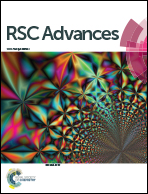Thermo responsive ultrafiltration membranes of grafted poly(N-isopropyl acrylamide) via polydopamine
Abstract
Commercial poly(ethylene terephthalate) (PET) microfiltration (MF) membranes have been modified with thermo responsive poly(N-isopropylacrylamide) (PNIPAm) via polydopamine. At first, dopamine was self-polymerized under wet conditions. Then, the amino-terminated PNIPAm was grafted by its amino group on the reactive polydopamine layer in aqueous solution. X-ray photoelectron spectroscopy (XPS) was used to study the chemical structure of the membrane surface, which confirmed the successful introduction of polydopamine and immobilization of PNIPAm molecules. Changes in surface morphologies after modification were investigated by means of scanning electronic microscopy (SEM). The wetting behavior of membranes was characterized by dynamic contact angle measurements. Finally the membranes were investigated for pure water flux, rejection, antifouling behavior, and water flux recovery to assess suitability for filtration and separation applications. Separation properties of these membranes depend on temperature because of thermoresponsive behavior of PNIPAm. Flux strongly increases with temperature, fouling is reduced and recovery from fouling is significantly improved.


 Please wait while we load your content...
Please wait while we load your content...